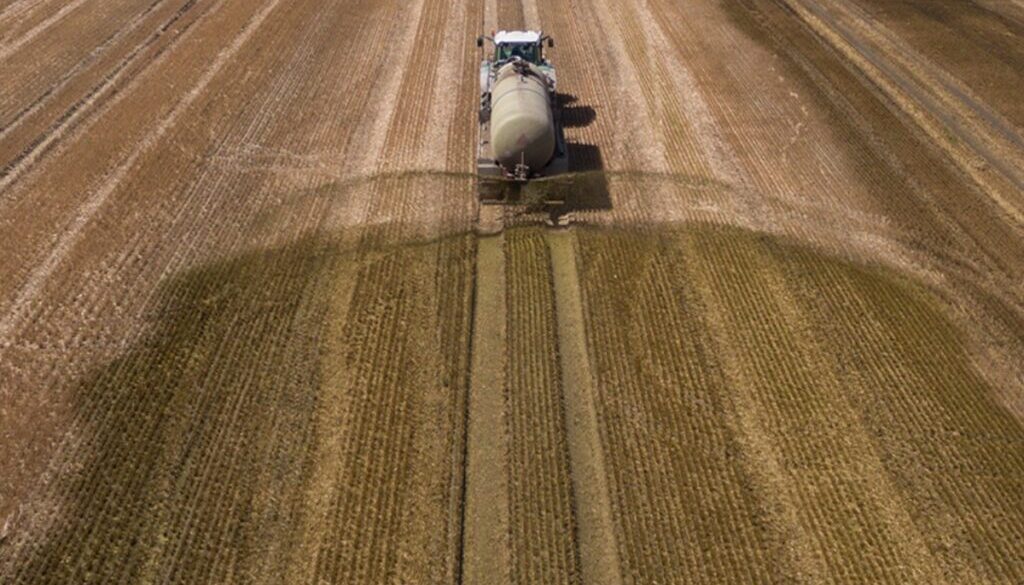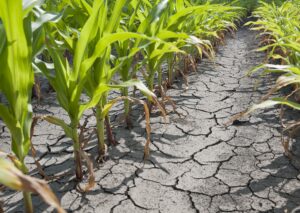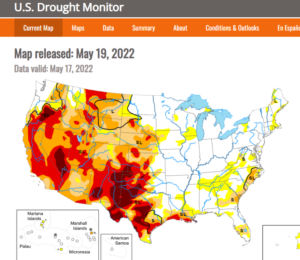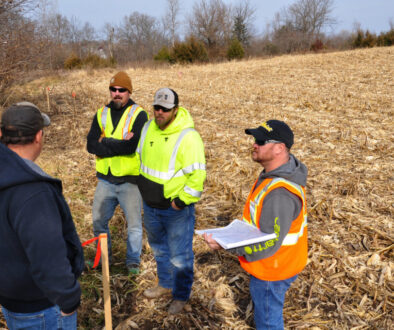“Urgent” action needed as climate change impairs agriculture, experts warn
By Scott Snowden
Urgent action is needed as drought, wildfires, pests, diseases and rising sea temperatures contribute to an environment that will significantly impact global crop production, leading to higher food prices and shortages as climate change accelerates, scientists warned this week.
“It’s a call for urgency. We need to act now,” Mario Herrero, professor of sustainable food systems and global change at Cornell University, said Monday in a media briefing backed by the American Association for the Advancement of Science. “If we don’t, it will be incredibly expensive to deal with this problem with the impacts of climate change later.”
Herrero noted that the war in Ukraine and the Covid-19 crisis have already led to worrisome price increases and exposed fragility in the global trade system.
A report from the United Nation’s top body of climate scientists published in April warned that global temperatures will go beyond a key danger point unless countries worldwide cut greenhouse emissions faster than they are currently committed to doing.
In the 2015 Paris Accord, governments agreed to keep global warming below 2°C this century. However, temperatures have already increased by over 1.1°C since pre-industrial times, triggering increases in extreme heat, droughts, hurricanes and extensive flooding, among other devastating impacts.
The Western United States is currently facing the worst drought since 800 A.D. with symptoms including diminishing snowpacks, depleted reservoirs and arid-dry topsoil. California’s largest reservoirs, Lake Shasta and Lake Oroville, are at “critically” low levels, according to a report from the US Drought Monitor. And a recent study published in Nature Climate Change predicted a 94 percent chance that the drought will continue throughout 2023 and the chances of it persisting through 2030 are 75 percent, when the continued challenges of a warming climate are incorporated.
As well, the impact of climate change can be seen in just about every aspect of the Earth’s oceans, from warmer water temperatures affecting hydrodynamic cycles, undersea currents and fish migratory patterns, to coral bleaching and shellfish aquaculture.
Cynthia Rosenzweig, senior research scientist at the NASA Goddard Institute for Space Studies and Columbia University Earth Institute’s Center for Climate Systems Research warned that farmers in some regions are facing the potential for more frequent drought, heat stress, more frequent pest infestations.
She noted that in high heat, crops speed through the growing season and are not able to make as much grain as typical. As well, she said, when crops grown in environments with high carbon dioxide (CO2) levels have reduced protein and micronutrients.
“Many of the U.S. agricultural regions are in places where it is project to get drier as climate change plays out through the coming decades,” Rosenzweig said.
In California, key crops that include wheat, rice and tomatoes are among the crops projected to have reduced yields in the coming decades due to climate change, she said.
Federal policies need to adapt to provide farmers with incentives that reward resilience amid the increasing challenges of more frequent droughts in some areas and increased flooding in others, according to Rosenzweig.
Projections for areas outside the United States show that there is “great vulnerability” for crop production in the developing world from climate change, as well, she said.
To respond to the threat, farmers and policy makers need to work toward reducing soil erosion, increasing soil organic carbon content, improving cropland management, diversifying crops, and improving agro-forestry to help store carbon, among other strategies, Rosenzweig said.
Abigail Lynch, a biologist with the U.S. Geological Survey, said that aquaculture can be a sustainable source of food, but management is key.
“If we, as a management community and as a fishing industry, don’t adapt to those changes, it may be more difficult to maintain in terms of the current food supplies,” said
According to Lynch, fish and related products are now among the most traded food commodities in the world, estimated at a total of $145 billion. In terms of livelihoods, almost 60 million people, more than 10 percent of the global population, depend on capture fisheries and aquaculture for livelihoods.
“Just as an estimate, the annual economic costs of ocean acidification in the US could be somewhere around the range of $400 million,” Lynch said.






